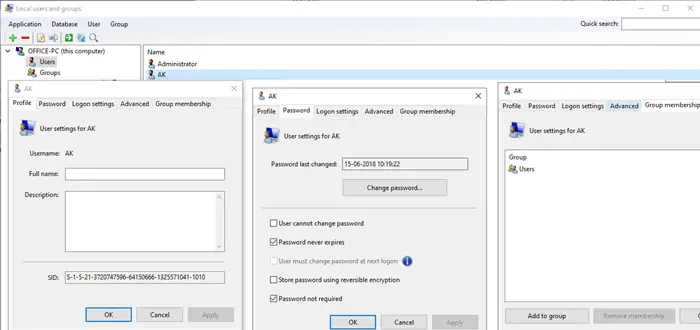Local User & Group Management in Windows 11/10 Home
Lusrmgr is a third-party app available for Windows 11/10 Home, which they can use it to get all the features available in the official version of lusrmgr.msc. This tool has been built to offer a lot more features which includes
Password:Change PasswordStore password using reversible encryptionLogon SettingsDisplays last successful logonNumber of failed logonAccount expiration dateLogon Script PathAdvancedUnlock Account if it’s in a locked stateGroup membership
One of the exciting features of this tool is the option to set access time for that user in Windows. It is useful when you do not want to depend on Microsoft Family, and need something that works offline. You can choose the blocked time for each day, and the time range for the user.
Then comes the search part, which is missing in the official version. It makes it easy to find an account if there are too many on the computer. As an IT admin, you will be able to connect to remote machines as well to manage users and groups remotely. You can also access the Built-in security principals by activating it from the menu. It is available in read-only mode, but you can copy the name or SID of any of the principals. Last but not least, you can perform all simple operations like edit, create, delete, add members to groups, and so on. Overall it’s an excellent app that is going to be a boon for those tech guys who are still running Windows 11/10 Home. Here is how the official local user and group management looks like in Windows 11/10 Pro, and it is rather straightforward, and that using the third party tool gives you more access compared to the official tool.
The tool works on all versions of Windows. It requires .NET Framework version 4.5 or newer. When you download it, you will be warned by Windows SmartScreen. Click on More Info, and choose to Run anyway after the download is complete. Download it from GitHub. If you do not want to use a third-party tool then, you can open and manage Local User and Group Management using the command line in Windows 11/10 Home. Related reads:
